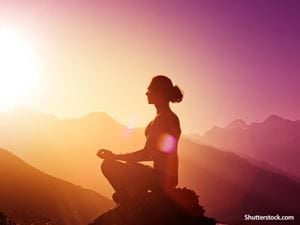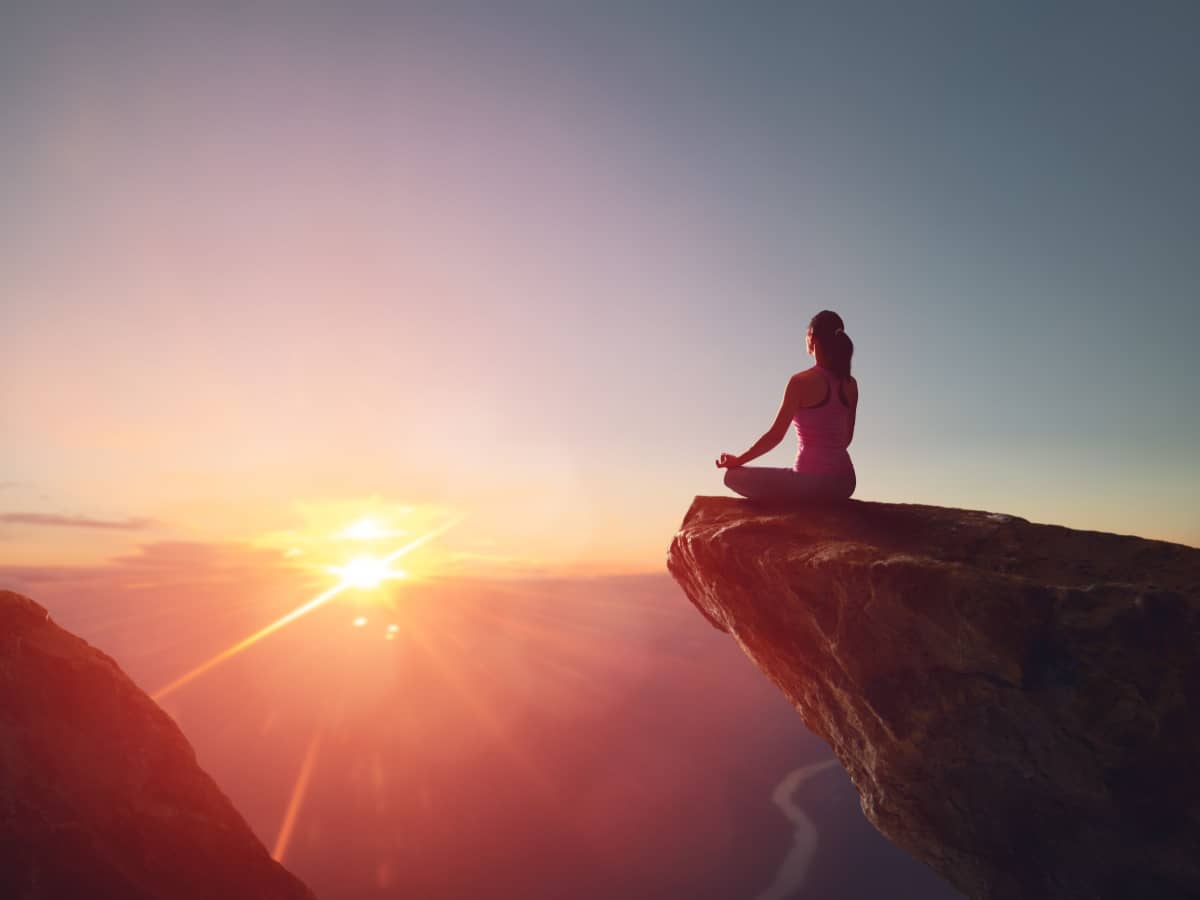
Yoga is more than movement. It’s more than a mat or a set of stretches or a 90-minute activity to take the edge off the day. To Ally Hamilton, author of “Yoga’s Healing Power,” it is a way of life, and a path to healing. Yoga, which has more than 20 million American devotees, has definite physical benefits, helping people increase flexibility and relax their bodies. Yoga, as a system of thought, can also bring healing to the mind.
Hamilton writes of the word “sankalpa,” which is a Sanskrit word for “intention.” “Sankalpa,” she writes, “is the way to overcome negative samskaras, or patterns that aren’t’ serving us." All of the tools that yoga bequeaths to practitioners are used to break these negative habits—things that we do, repeatedly, that bring us discomfort or unhappiness. For those who keep up with psychology trends, this is a familiar concept. Breaking a bad habit often requires inserting a replacement. For instance, a counselor might recommend that someone drink water rather than smoking another cigarette. Eventually, that person will automatically begin to reach for their cup rather than their cigarette when they get a craving. The breaking of bad habits is essential for our wellbeing.
Hamilton goes on to write that the spiritual component of yoga “doesn’t ask you to memorize rules and then try to live by them; it teaches you to practice these ideas in your own body, from the inside out. It doesn’t ask you to take it on faith; it tells you to go ahead and test it out.” It’s immediately applicable, once learned, but “only works if you work it,” if you take the time to learn what yoga is all about and implement its practices, which revolve around eight limbs—eight sets of philosophical concepts which help show us the best way to live, and five kleshas, or obstacles to be overcome—ignorance of ourselves, strong identification with the ego, attachment to pleasure, aversion to pain, and fear of death.
Yoga’s healing power is bound up in self-realization—freedom from external coercion, whether that means freedom from addiction or bad habits or ignorance. The kleshas are walls that stand in the way of our self-realization, blocking us or blinding and keeping us from achieving our happiness. Hamilton illustrates the healing that yoga can bequeath, powerfully, as she moves through the ways she overcame each of the five kleshas in her own life, her examples giving readers a much more thorough understanding of how yoga can be applied to life, rather than simply limiting it to a form of exercise.
The first klesha, ignorance of ourselves, is something that many suffer from. Each of us have cycles of pain—patterns, engrained in us by tragic circumstances, which we repeat over and over in our lives. Hamilton speaks of the beginning of her own cycle—issues with a commitment-phobic father and a mother who dabbled in alcoholism. She was often left wondering why she wasn’t loved. This manifested itself later in her life, as is the case with many of us, leaving her in a dire and painful situation. These tendencies are the aforementioned samskaras, or “grooves in the unconscious mind,”—our bad habits—and the more they are repeated, the stronger they become.
These patterns, though, can begin to be broken by simply recognizing them, by dragging them out into the light. Practicing yoga can help with this. Hamilton recommends that, when we finally begin to recognize these habits, we give some attention to our bodies, looking, especially at our posture, which often communicates how we feel about ourselves. The body can “store events and emotions for years,” and working with, and being aware of the body can unlock and undo these patterns from the past.
The next klesha, strong identification with the ego, is equally damaging, and especially affects those who are successful. Hamilton illustrates this point, writing about a wealthy client who was, at his core, unhappy. The klesha of the ego causes us to identify ourselves by what we have and what we’ve achieved, rather than who we really are—this limits us greatly. We look outside of ourselves for our value. The problem with this? Our stuff changes. Material wealth comes and goes. When we overcome this klesha, we are able to see our true value, which is much higher than that of anything we could ever buy.
Attachment to pleasure and the aversion to pain are the next two kleshas, and are two of the most familiar roots of destructive habits. They bring to mind things like drug addiction, unhealthy food cravings, and destructive physical relationships. But it can be any kind of crutch, really. The two kleshas are often intertwined—sometimes, we seek to drown ourselves in pleasures in order to run away from past hurts. Hamilton writes that “You may have developed coping mechanisms as you grew up, and perhaps they were necessary and served you then. Maybe you learned to run when things got scary, or to make yourself invisible…Or perhaps we hit our teenage years and started blurring the edges with drugs or alcohol, so reality would look and feel a little better.” In order to face these two kleshas, it is necessary to bring these coping mechanisms to light. When you’re on the mat, as Hamilton says, “there’s no escaping the truth”. You’ll be confronted with yourself, and once you are? You’ll be able to break down these barriers and free yourself.
The final klesha, the fear of death, is paralyzing. Hamilton writes that our “attachment to the earthly life is the root of most of our fears.” She goes on to say that “so much trouble comes from our strong identification with the body we’re in, with our names and our jobs and our hair color, and our huge fear that we are going to die and become nothing.” The realization that, quite literally, nothing comes from nothing, and that death is merely a transformative state is one that is not easy to attain, but one that can bring great relief. Within the belief framework of yoga, reincarnation occurs—you get to come back, which is much less frightening than the unknown. The point of each reincarnation is to reach the point where you don’t need to keep coming back, when you’ve finally learned and evolved so far that you no longer need an earthly body. You achieve, as Hamilton writes, “enlightenment”.
Hamilton writes that the “Dark Night of the Soul” that you’ll encounter when practicing yoga isn’t easy, but that “it’s easier than a lifetime spent suffering”. This is absolutely true. The sooner that you achieve self-realization, that you overcome the five kleshas we’ve outlined—which are only a small taste of what yoga is all about—the sooner you can begin to find happiness and peace. To find out more about Ally Hamilton’s journey into yoga, and to share in the wisdom she’s found there, check out “Yoga’s Healing Power”. You’ll find, as the title says, that yoga can be a path to healing, no matter what your core spiritual beliefs might be. The path to knowing You is never a bad one to tread.
